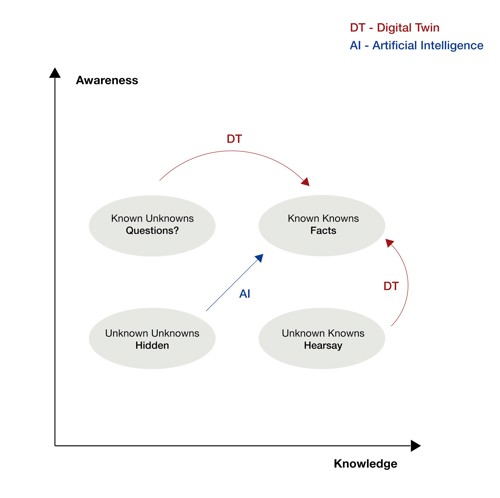Digital Twins are used to support decision-making, helping to make well-judged and well-timed interventions. They help make sense of complex and uncertain situations. A Digital Twin is a computer-based model that reflects observed reality. It links what people measure to what they really care about. The essence is trusted data, algorithms and feedback, continually updated to reflect the new demands of existing and evolving purposes. They may be used to reveal behaviour that is hidden or difficult to comprehend, seeing how things look now and might change at some point in the future.
Digital Twins unlock awareness, knowledge and action.
They improve awareness. They can turn hearsay information into data which may be interrogated and analysed further. Eliciting knowledge from people, historical records and other sources. These are the unknown knowns.
They increase knowledge. They can answer difficult questions about the state and behaviour of things and processes, using history, science and mathematics to untangle complexity. These are the known unknowns.
They provoke action. Increasing the amount, variety and readiness of data to provide better context for decision making, reducing uncertainty about what might happen following an intervention. It takes some of the sting out of decisions. These are the known knowns.
And now we are in a position to tackle the unknown unknowns, applying advanced analytics, machine learning and Artificial Intelligence to the knowledge that is unlocked. These are the hidden secrets that emerge from any complex system. There are prizes to be won, or care to be taken, in discovering the things that we don’t know we don’t know.

Catch up with all the blogs in our Digital Twin series here, and read the next episode 'Time and space. The relativity of structure, behaviour and value' here.